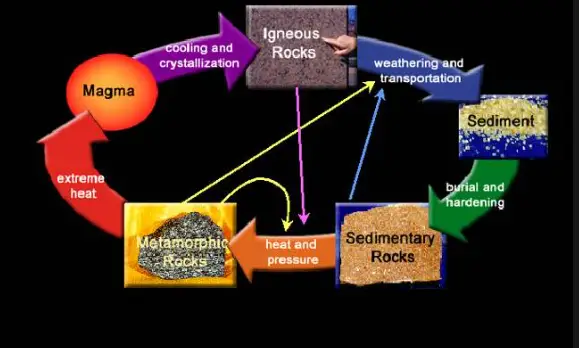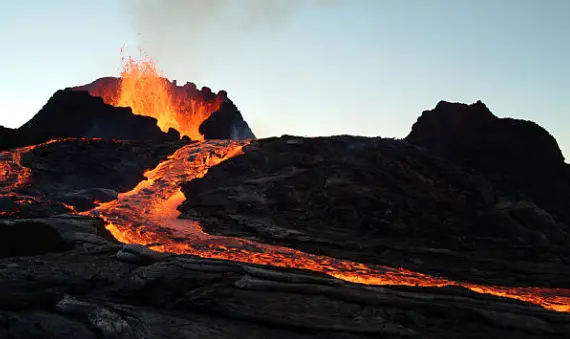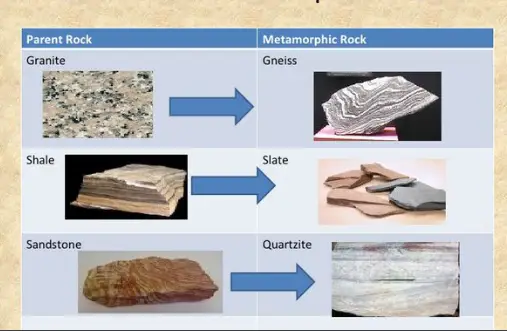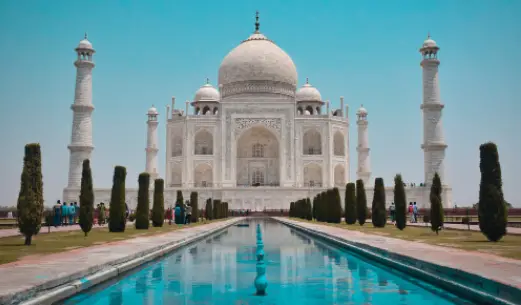
HOW IS A METAMORPHIC ROCK FORMED ?
Metamorphic rocks are created when igneous and sedimentary rocks are exposed to extreme heat and pressure deep within the Earth’s surface, caused by magma or by the intense collisions and friction of tectonic plates.
This process is called metamorphism, which does not melt the rock, but instead it transforms them into a denser, more compact rock.
Earth’s movements causes the rock bed to shift and move, and this movement causes other rock types to be squeezed, putting then under extreme pressure.
With the extreme pressure and heat from the magma beneath the crust, this causes chemical changes, which transforms other rock types into metamorphic rocks.
One example of this process of metamorphism, is the sedimentary rock called limestone, which is transformed into marble due to the extreme heat and pressure.
DEFINITION OF :
METAMORPHISM = The process by which rocks are changed in composition, texture, or structure by extreme heat and pressure.
TECTONIC PLATES = These are large pieces of land like a giant round jigsaw puzzle that covers Earth underneath the ground, that move and collide together, even though it is only a couple of centimeters a year.
MAGMA = Magma is extremely hot liquid located under the Earth’s surface. This magma can push through cracks or holes in the crust, causing a volcanic eruption.
When magma flows or erupts onto Earth’s surface, it is called lava.

SHORT FACTS ON METAMORPHIC ROCKS !!!
Metamorphic comes from the ancient Greek words, “meta” (meaning change) and “morphe” (meaning form).
Uplift and erosion help bring metamorphic rocks to the Earth’s surface.
There are two types of metamorphic rocks. They are foliated metamorphic rocks and non-foliated metamorphic rocks.
In the geology of a rock, the word “foliated” is described as having a structure of thin layers.
Examples of foliated metamorphic rocks include, gneiss, phyllite, schist, anthracite, and slate. These all have a layered or banded appearance from the exposure to extreme heat and pressure. Because of the layers, they can be easily split apart. An example would be slate, as it is often split to make thin roofing tiles.

Examples of non-foliated metamorphic rocks include, hornfels, marble, quartzite, and novaculite. These have no layered or banded appearance and are very durable and strong rocks.
Metamorphic rocks along with igneous and sedimentary rocks, are classified on the basis of grain size, shape, orientation, and mineral composition.
Metamorphic rocks can also be formed from other metamorphic rocks.
Most of the Earth’s crust is made up of metamorphic rock.
Slate, a metamorphic rock, can form from either clay, shale, or mudstone.
Quartzite is a metamorphic sandstone.
Marble is a metamorphic rock formed from the sedimentary rock of limestone.
Granulite is a metamorphic rock formed from the igneous rock of basalt.
Anthracite is a type of coal, and although coal is a sedimentary rock, anthracite is a metamorphic rock. It is often referred to as hard coal.
The famous Taj Mahal in India is one big metamorphic rock, as it is made up entirely of marble.





